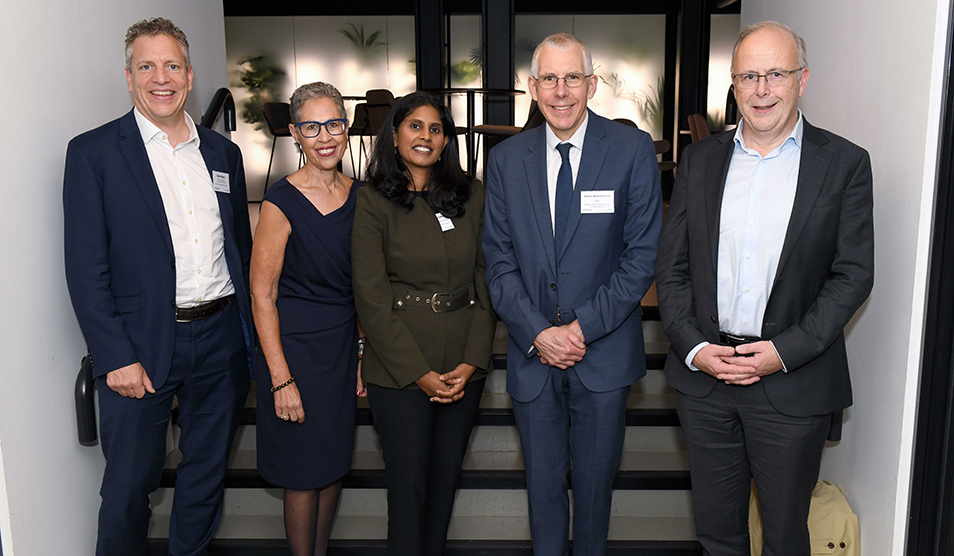AI analysis could help guide the optimum time to collect eggs for IVF success
A new analysis using artificial intelligence (AI) has shown that IVF treatment is more likely to be successful if the egg collection process starts when follicles – the small sacs in the ovaries that contain eggs – reach a certain size.A research team led by doctors from Imperial College Healthcare and colleagues from Imperial College London used ‘explainable AI’ - a type of AI that provides an understanding of how decisions or predictions were made - to analyse data from more than 19,000 patients who had completed IVF treatment, including patients at Imperial College Healthcare clinics. The researchers examined which follicle sizes were associated with retrieving more mature eggs and babies being born.
The team, who are supported by the National Institute for Health and Care Research (NIHR) Imperial Biomedical Research Centre (BRC) believe that the findings from the study highlight the potential of AI to personalise IVF treatment and maximise families’ chances of having a baby.
One in six couples experience infertility and in-vitro fertilisation (IVF) treatment is one of the options available to help these couples conceive. When eggs are collected for IVF, patients are given a hormone injection known as the ‘trigger’ to prepare the eggs for collection and ensure they are ready to be fertilised with sperm to create embryos. The timing of this injection is key as it works less effectively if the follicles are too small or too large when it is given.
The research team found that giving the trigger injection when follicles were sized between 13-18mm was linked to more mature eggs being retrieved and more babies being born.
Doctors use ultrasound scans to measure the size of the largest follicles (known as ‘lead’ follicles) and generally give the trigger injection when two or three of these follicles reach around 17-18mm. On average, there are around 6-10 follicles per ovary and they can grow to a maximum of around 23mm.
The current method does not take into consideration the sizes of each individual follicle and the likelihood of each follicle yielding a mature egg.
These findings suggest that giving the trigger when more follicles reach an ‘intermediate’ size (around 13-18mm), could increase the number of mature eggs retrieved and lead to more babies being born, compared to just measuring the lead follicles only.
After eggs are collected and fertilised by sperm, a healthy embryo is selected and implanted into the womb to hopefully lead to pregnancy.
The team plan to test their findings in a clinical trial and create an AI tool that will use data, including findings from this study, to personalise IVF treatment and support doctors’ decision making at each step of the IVF process. The team will apply for funding to take this tool into clinical trials.
The research, published in Nature Communications, is led by researchers at Imperial College London, University of Glasgow, University of St Andrews, and clinicians at Imperial College Healthcare NHS Trust. It is funded by UK Research and Innovation and the NIHR Imperial BRC
Dr Ali Abbara, consultant in reproductive endocrinology and co-senior author of the study said: “IVF provides help and hope for many patients who are unable to conceive but it’s an invasive, expensive, and time-consuming treatment. It can be heartbreaking when it fails, so it’s important to ensure that this treatment is as effective as possible.
“AI can offer a new paradigm in how we deliver IVF treatment and could lead to better outcomes for patients.
“IVF produces so much rich data that it can be challenging for doctors to fully make use of all of it when making treatment decisions for their patients. Our study has shown that AI methods are well suited to analysing complex IVF data. In future, AI could be used to provide accurate recommendations to improve decision-making and aid in personalisation of treatment, so that we can give each couple the very best possible chance of having a baby.”
Professor Waljit Dhillo, consultant endocrinologist, leads the metabolic and endocrine theme at the NIHR Imperial BRC and is co-senior author of the study. He added: “Our findings could pave the way for a new approach to maximise the success of IVF treatment, leading to more pregnancies and births.
“Our study is the first to analyse a large dataset to show that AI can identify the specific follicle sizes that are most likely to yield mature eggs more precisely than current methods.
“This is an exciting development as the findings suggest that we can use information from a much wider set of follicle sizes to decide when to give patients trigger shots rather than just the size of only the largest follicles - which is what is used in current clinical practice.”
The researchers also found that stimulating the ovaries for too long could have a negative impact on IVF outcomes by affecting the development of the tissue that lines the uterus. This reduces the chances of an embryo implanting and subsequently leading to a live birth. These AI-derived insights can further help the team develop evidence-based IVF protocols guided by data to improve the efficiency of treatment.
Commenting on the role of AI in healthcare, Dr Thomas Heinis, co-senior author from the department of computing at Imperial College London, added: “Explainable AI can be a valuable resource in healthcare. Where the stakes are so high for making the best possible decision, this technique can support doctors’ decision making and lead to better outcomes for patients. Importantly, we expect computing power to improve exponentially in the near future, enabling us to make decisions using precise data in a way that hasn't been possible previously.”



